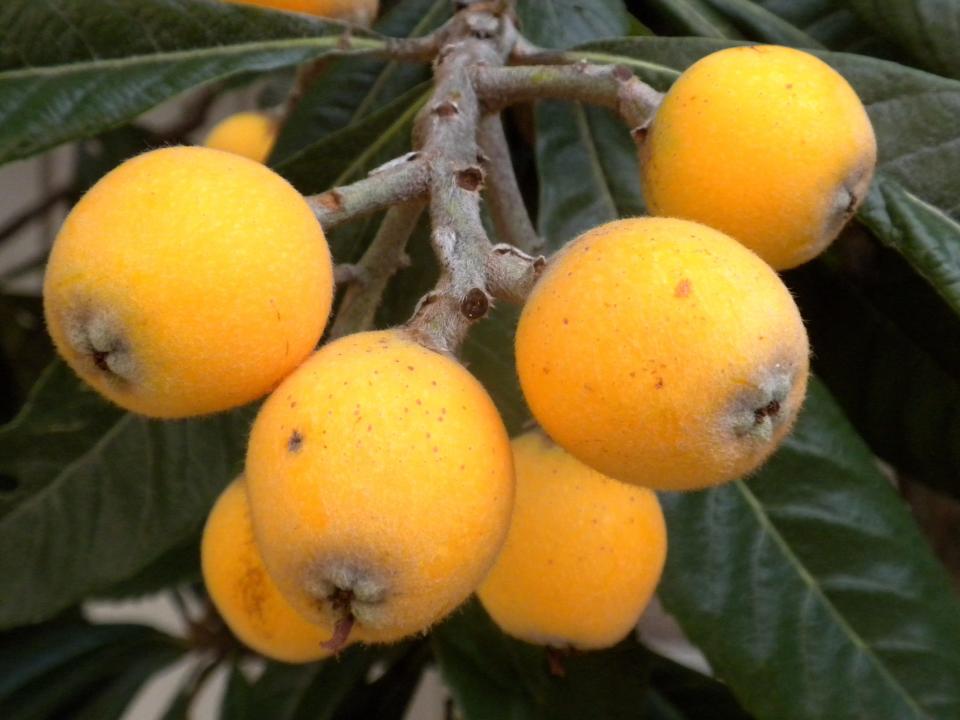Prolific fruit tree will produce a harvest by end of spring | Mystery Plant
One of my favorite trees here at the university grows right behind the herbarium. It’s been there for years (the building was constructed about 1974), and is now about 25’ tall.
I’m terrible at estimating heights of trees — but let’s just say that it’s tall enough for you to cause serious damage if you fell out of it, while climbing around. But why would you want to climb around in this tree?
It’s simple: this is an honest-to-goodness fruit tree, producing prolifically. The fruits are amazingly tasty, and the funny thing is, not many people around here seem to know what they are missing when the ripe fruits are ready.

Here’s how it works:
The tree (Loquat, Japan plum, Eriobotrya japonica) itself is native to eastern Asia, and is a good, solid member of the rose family. Its leaves are alternate, and relatively large. The blades are thick and leathery, dark, shiny green above, and prominently reddish-brown fuzzy all over the bottom.
The margins are prominently and sharply serrated, with strong lateral veins visible branching from the midvein. The flowers are produced in clusters terminating branches, so we call them “terminal panicles.” The branches of the panicles are thick, and covered with that same reddish-brown fuzz that’s on the lower surface of the leaf.
Each flower will have 5 fuzzy sepals, and 5 perfectly white (fuzz-free) petals. The petals themselves look a lot like what you might find in the flower of an apple tree. Apple trees are also in the rose family, after all.
There will be about 20 separate stamens in each flower. Now, the ovary of the flower is made up much like you find in an apple, with the ovules covered over by a thick hypanthium — which is the tasty part of a ripe apple that we eat.
And, like an apple, our Mystery Plant’s ovary will be below all those other flower parts…an “inferior” ovary.
The funny thing about this plant is that it is blooming RIGHT NOW — and its fragrance is almost overwhelming! It’s got a delightfully sweet fragrance. So, this is one of those trees that blooms very late in the year. A blooming bough is great to being in for a holiday arrangement, as the flowers will fill up a room with fragrance. Watch out for the fuzzy hairs, though.
But the most interesting thing, perhaps, is the fruits that slowly develop for the rest of the winter, and through the spring. Fruits begin to ripen in late spring and early summer. When fully mature, each fruit will be smooth-skinned and bright yellow — and they are fragrant, too.
The fruits are quite edible, and as I was saying, most people don’t seem to be clued into this fact. To me, the fruits have a sort of tart sweetness, tasting something like a cross between apple and pineapple. If you are lucky enough to have one of these plants with ripe fruits, you don’t need clippers to remove them, and you probably won’t have to climb into it, either.
The fruits can be eaten right off the tree, raw. Don’t bother peeling them. In the kitchen, there’s all sorts of things you can do with them, too. Full of fiber, vitamins, and other happy things.
John Nelson is the retired curator of the Herbarium at the University of South Carolina, in the Department of Biological Sciences. As a public service, the Herbarium offers free plant identifications. For more information, call 803-777-8175 or email johnbnelson@sc.rr.com.
This article originally appeared on Tallahassee Democrat: Loquat produces an abundant harvest of tart, sweet fruit

